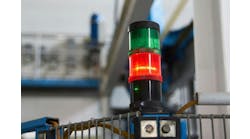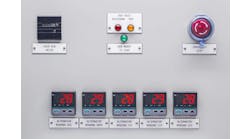Everyone is someone else’s customer or supplier, depending on their location on each supply chain. And, because they lean so heavily on each other, it helps if each know more about what’s going on further upstream and downstream from their original position. Not surprisingly, these efforts can also be aided by data gathering and analytics that can provide better options more quickly.
“Though I can only speak for Pepperl+Fuchs’ distribution, we’ve experienced many of the same supply chain issues as everyone else, especially the chip shortage. Still, there’s been a lot of relief lately, and we’re shipping many orders that were backlogged. We can’t fill new orders for several weeks, but that’s better than before when we had no idea,” says Todd Belt, distribution channel manager in the factory automation division at Pepperl+Fuchs. “Some microprocessors are still unavailable, but this is also because healthcare, the auto industry and defense take priority, and many other industries are left behind. The good news is many former shortages of raw materials have cleared up, such as resins for molded cable ends and male/female pins for cables.”
Despite witnessing huge increases in shipping costs, Belt reports that Pepperl+Fuchs has largely avoided the chronic prices increases besetting other suppliers and industries. “We’ve learned it’s crucial to study what’s available, and be prepared to react quicker to new market conditions. For example, if microprocessors aren’t available, then it’s important to be ready to go with suitable equivalents by redesigning products, and testing and certifying replacement chips ahead of time. Some users are even reverting to devices that don’t use microprocessors,” he explains. “We redesigned several products, such as several IO-Link items and laser measuring devices. They all have chips and Ethernet chips, and our redesigned products let us ship them again. Coincidentally, the old microprocessors showed up just as products with the new chips were shipping. However, we’re keeping our redesigns, and will redesign again as needed.”
Belt adds that another legacy of COVID-19 is that it accelerated ecommerce, and motivated many suppliers and distributors to expand their online stores. “We work with 40 distributors in the U.S. and Canada, and they’re coming up with many unique ways to sell online or via improved vendor-managed inventories (VMI)” he says. “Users previously limited vendors to contracts, which made it hard for other distributors. However, COVID-19 changed this idea of only using one supplier, and more distributors are focusing on VMIs to encourage participation.”
Data fuels flexibility
Meanwhile, Thomas Evans, robotics CTO at Honeywell, reports that continuing shortages of many items from sensors to raw materials is forcing suppliers and end users to concentrate more intensely on their supply chains to succeed.
“Honeywell has a broad reach and breadth of customers, so we understand that dual supply sources are needed, problems must to be escalated quickly, and design should be reexamined for other sources and better lead times. These tasks are all about capturing data,” says Evans. “Lately, we’re seeing some upstream relief and fewer bottlenecks, though some of the largest continue to impact I/O modules and PLCs. Devices with microprocessors are still experiencing the longest lead times.”
Evans reports these hardware shortages are driving users to seek software-based and cloud-computing solutions. “If we need a seven-axis arm for a palletizer, for example, we’re trying to build more resilience into the supply chains for buying the hardware mountings and software intelligence it requires,” explains Evans. "We may simply buy the arm, and add the cameras, vision system, other hardware, Honeywell Universal Robot Controller and other software ourselves. We’ll also make sure we have an intelligent interface into this process, as well as data and analytics for it, so we’ll know what’s going on in these supply chain on a week-to-week basis, so we don’t get caught off guard.”
Evans adds that today’s successful control and automation projects must address supply chain issues by adopting modularity and interoperability principles, so they can use multiple supply sources as needed. “They must also collaborate, refresh acquaintances, and maintain stronger vendor relationships, including taking into account what issues their suppliers are facing. This will make sure everyone has a good grasp of the issues and the common understanding they’ll need to succeed.”





